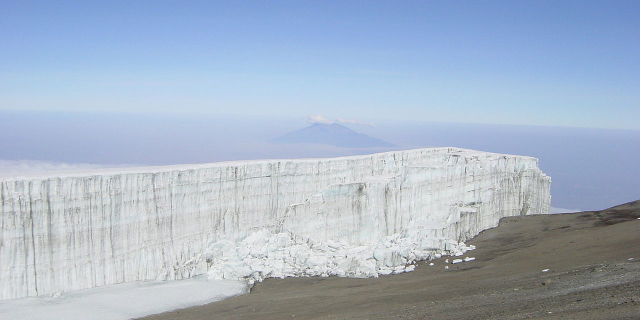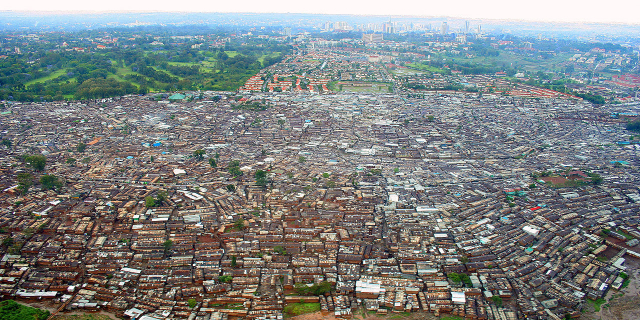The Olduvai Gorge or Oldupai Gorge in Tanzania is one of the most important paleoanthropological localities in the world; the many sites exposed by the gorge have proven invaluable in furthering understanding of early human evolution. A steep-sided ravine in the Great Rift Valley that stretches across East Africa, it is about 48 km long, and is located in the eastern Serengeti Plains within the Ngorongoro Conservation Area in the Olbalbal ward located in Ngorongoro District of Arusha Region, about 45 kilometres (28 miles) from Laetoli, another important archaeological locality of early human occupation. The British/Kenyan paleoanthropologist-archeologist team of Mary and Louis Leakey established excavation and research programs at Olduvai Gorge that achieved great advances in human knowledge and are world-renowned. The site is registered as one of the National Historic Sites of Tanzania.
The gorge takes its name from the Maasai word oldupai which means "th...Read more
The Olduvai Gorge or Oldupai Gorge in Tanzania is one of the most important paleoanthropological localities in the world; the many sites exposed by the gorge have proven invaluable in furthering understanding of early human evolution. A steep-sided ravine in the Great Rift Valley that stretches across East Africa, it is about 48 km long, and is located in the eastern Serengeti Plains within the Ngorongoro Conservation Area in the Olbalbal ward located in Ngorongoro District of Arusha Region, about 45 kilometres (28 miles) from Laetoli, another important archaeological locality of early human occupation. The British/Kenyan paleoanthropologist-archeologist team of Mary and Louis Leakey established excavation and research programs at Olduvai Gorge that achieved great advances in human knowledge and are world-renowned. The site is registered as one of the National Historic Sites of Tanzania.
The gorge takes its name from the Maasai word oldupai which means "the place of the wild sisal" as the East African wild sisal (Sansevieria ehrenbergii) grows abundantly throughout the gorge area. Twenty-five kilometers downstream of Lake Ndutu and Lake Masek, the gorge is the result of up to 90 meters erosion cutting into the sediments of a Pleistocene lake bed. A side gorge, originating from Lemagrut Mountain, joins the main gorge 8 km from the mouth. This side gorge follows the shoreline of a prehistoric lake, rich in fossils and early hominin sites. Periodic flows of volcanic ash from Olmoti and Kerimasi helped to ensure preservation of the fossils in the gorge.
The locality is significant in showing the increasing developmental and social complexities in the earliest Hominina, largely revealed in the production and use of stone tools. Prior to tools, evidence of scavenging and hunting can be noted—highlighted by the presence of gnaw marks that predate cut marks—and of the ratio of meat versus plant material in the early hominin diet. The collecting of tools and animal remains in a centralised area is evidence of developing social interaction and communal activity. All these factors indicate an increase in cognitive capacities at the beginning of the period of hominids transitioning to homininina—that is, to human clade.
Homo habilis, probably the first early human species, occupied Olduvai Gorge approximately 1.9 million years ago (mya); then came a contemporary australopithecine, Paranthropus boisei, 1.8 mya, followed by Homo erectus, 1.2 mya. Homo sapiens, which is estimated to have emerged roughly 300,000 years ago, is thought to have occupied sites in the gorge 17,000 years ago.
 Olduvai Gorge from space
Olduvai Gorge from space Topography map of the Olduvai Gorge
Topography map of the Olduvai GorgeWhile travelling in German East Africa in 1911 to investigate sleeping sickness,[1] German physician and archaeologist Wilhelm Kattwinkel visited Olduvai Gorge, where he observed many fossil bones of an extinct three-toed horse. Inspired by Kattwinkel's discovery, German geologist Hans Reck led a team to Olduvai in 1913. There, he found hominin remains which were later radiocarbon dated to 17,000 BP. Four more expeditions were planned, but World War I prevented their start. After the war, as Tanganyika came under British control, Louis Leakey visited Reck in Berlin and viewed the Olduvai fossils. Louis Leakey became convinced that Olduvai Gorge held stone tools, thinking the deposits were of similar age to the Kariandusi prehistoric site in Kenya. Reck and the paleontologist Donald McInnes accompanied Louis Leakey in his 1931 expedition, where Louis found a number of hand axes close to camp soon after their arrival. Mary Leakey first visited the area in 1935, joining Louis and Percy Edward Kent. Subsequent visits were made by the Leakeys in 1941, 1953, 1955 and 1957.[2]
Louis and Mary Leakey are responsible for most of the excavations and discoveries of the hominin fossils in Olduvai Gorge. In July 1959, at the FLK site (the initials of the person who discovered it Frida Leakey, and K for korongo, the Swahili language word for gully), Mary Leakey found the skull of Zinjanthropus or Australopithecus boisei. In addition to an abundance of faunal remains the Leakeys found stone tools Mary classified as Oldowan. In May 1960, at the FLK North-North site, the Leakeys' son Jonathan found the mandible that proved to be the type specimen for Homo habilis.[2]: 17–18, 54, 56–57, 73–77, 87
![Cliff Kemper[2] - CC BY-SA 2.0](/sites/default/files/styles/640x320/public/2022-03/Serengeti_gazelles.jpeg?h=ead717b0&itok=JsZMti_M)




























Add new comment